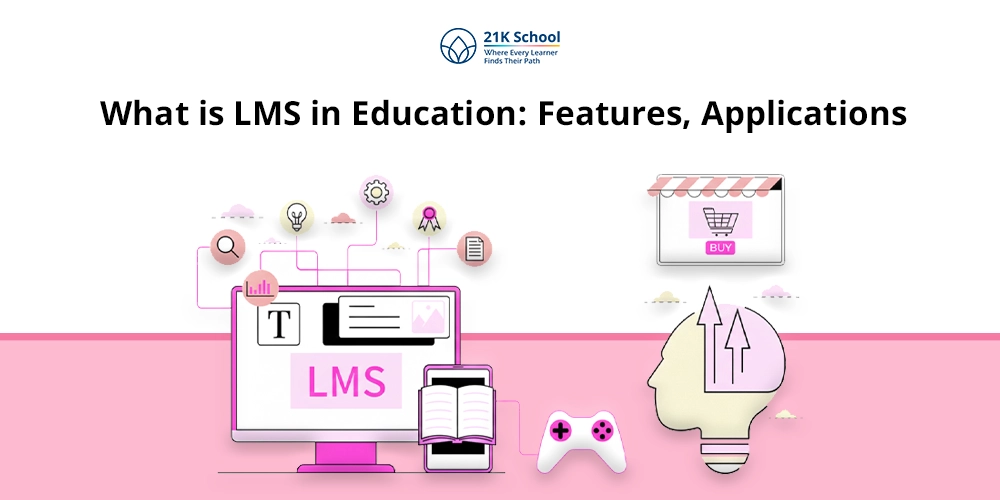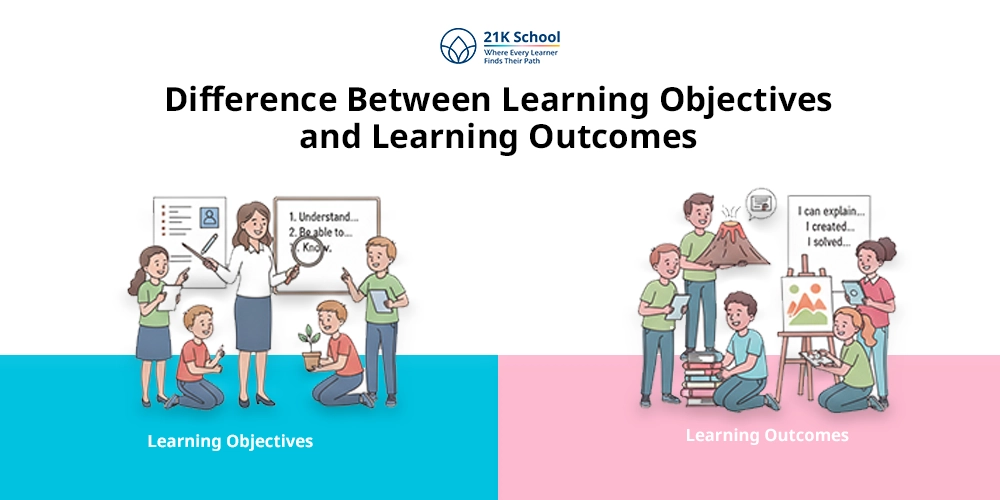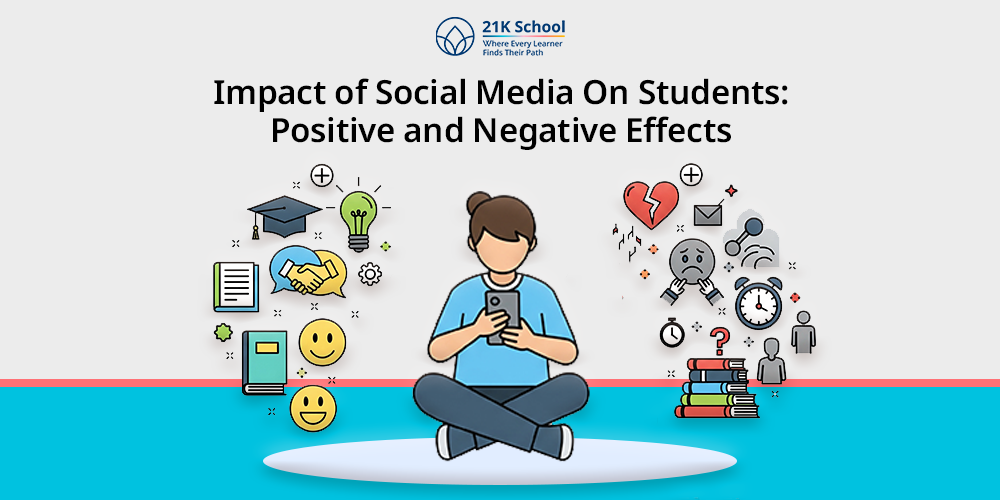
Learning in the 21st century is all about digitalisation and technology in education . But have you ever thought about what impact this digital world leaves in a learner’s life?
Whether it’s a young kid or an adult, the impact of social media is inseparable from every individual’s life.
Various online platforms for gaming, social networking, communication, and learning play a crucial role for both entertainment and education .
However, every technology has some advantages and disadvantages which offer opportunities to explore academic personal and global exposure as well as challenges like addiction and mental health problems.
Let’s understand the positive and the negative impact of social media on students’ academic and personal life.
Contents
What is Social Media and Why Do Students Use It?
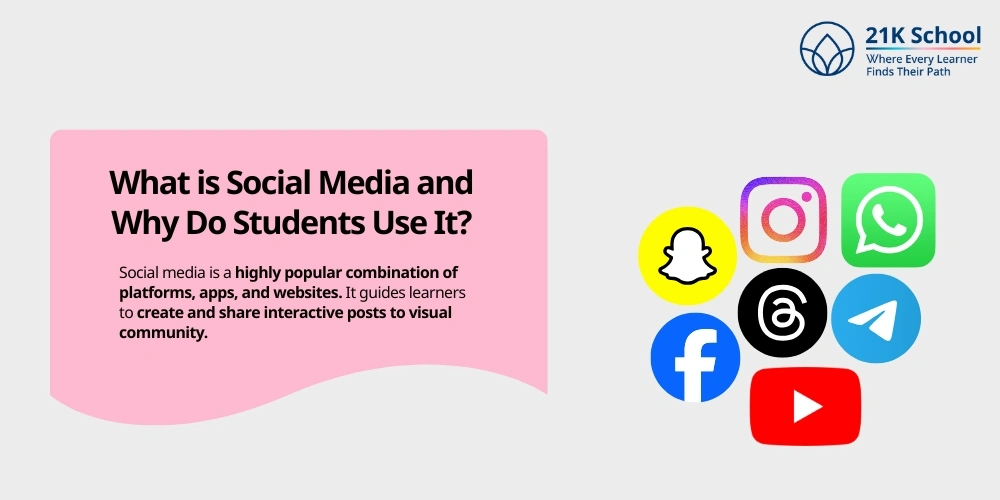
Social media is a highly popular combination of platforms, apps, and websites. It guides learners to create and share interactive posts to visual community.
Social media offers wide opportunities where people can connect, share their ideas, images, content, and other information to experience the digital world.
Students love social media in their daily life for entertainment, connecting with new people, gaining information, professional networking, community building and many more.
Positive Impact of Social Media on Students
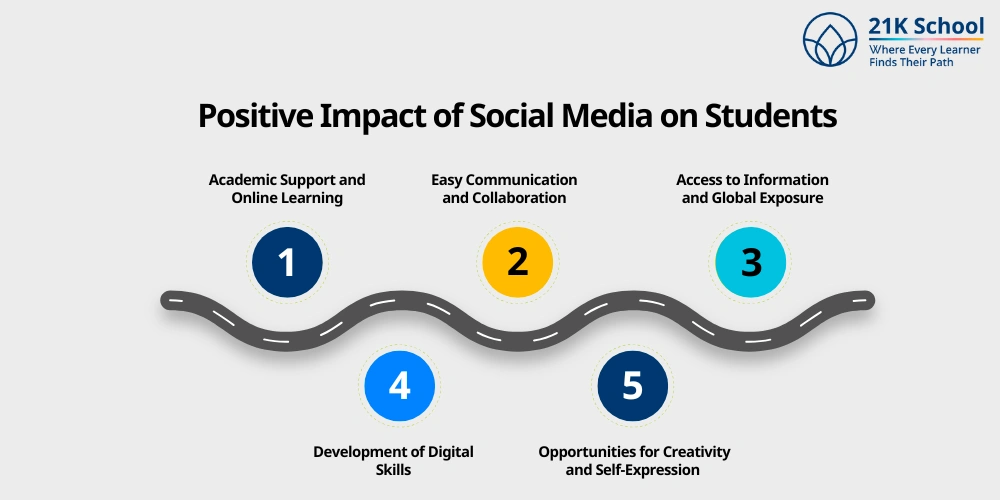
In this era, there are many reasons to use social media from enjoyment to education. However, using it wisely can be beneficial.
Below are some crucial points highlighting the positive impact of social media in students:
1. Academic Support and Online Learning
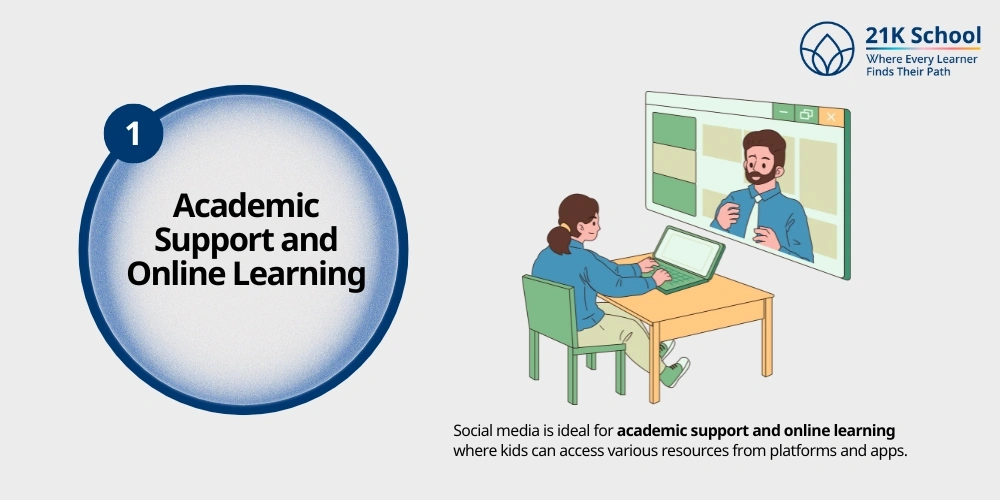
Social media is ideal for academic support and online learning where kids can access various resources from platforms and apps.
Popular e-learning platforms such as YouTube, Khan Academy, and Coursera and apps for learning programming languages like Programming Hub, Sololearn, Codecademy Go etc are ideal platforms for learning.
Effective use of these resources helps learners to stay connected through digital learning .
2. Easy Communication and Collaboration
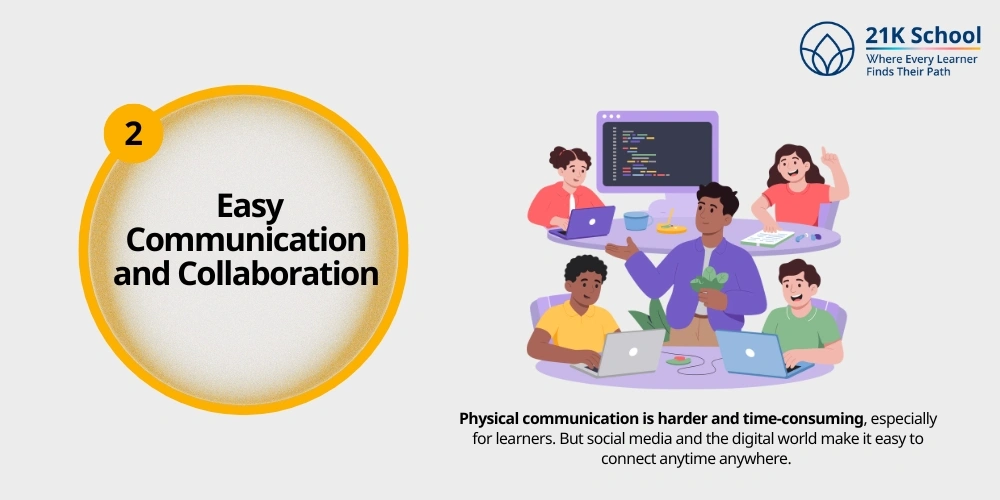
Physical communication is harder and time-consuming, especially for learners. But social media and the digital world make it easy to connect anytime anywhere.
Now, instead of face-to-face interaction for completing projects or homework , learners choose online meetings through virtual classrooms on Zoom or Google Meet.
Now communication is not limited to real life meetups; learners can coordinate, share, and update in seconds.
3. Access to Information and Global Exposure
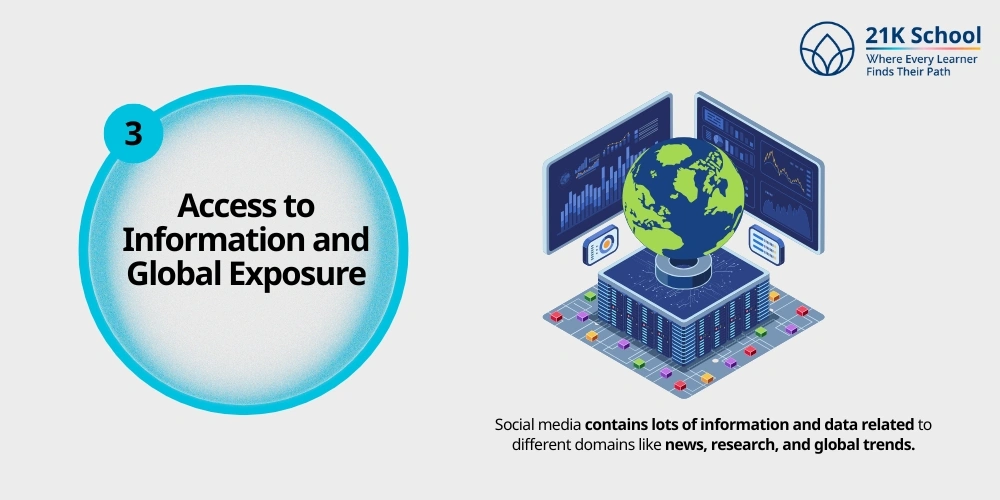
Social media contains lots of information and data related to different domains like news, research, and global trends.
For example, whether it’s climate change the next day one can stay updated through social media..
4. Development of Digital Skills
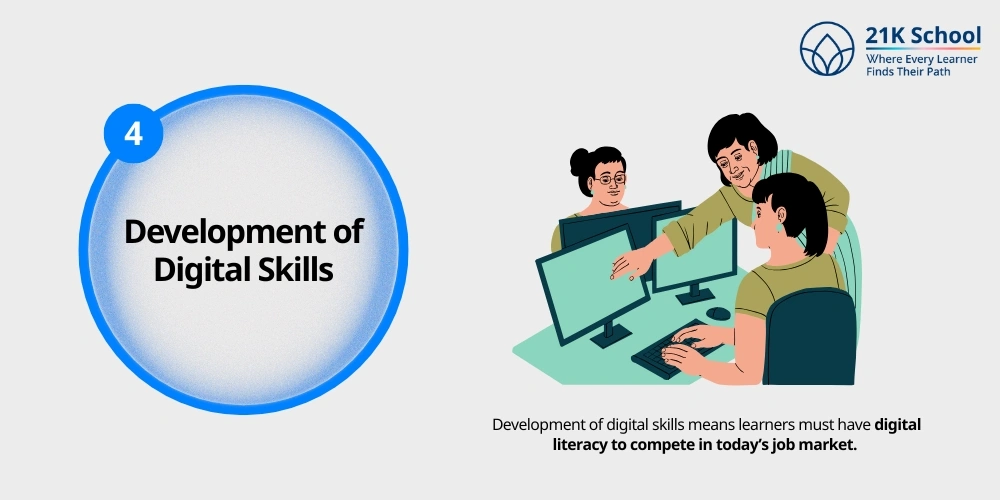
Development of digital skills means learners must have digital literacy to compete in today’s job market.
With the help of social media one can explore the use of how to manage online profiles, create digital content, navigate technological tools and many more.
The skills help learners to gain knowledge about higher education in various fields like marketing, business, communication, accounting etc.
5. Opportunities for Creativity and Self-Expression
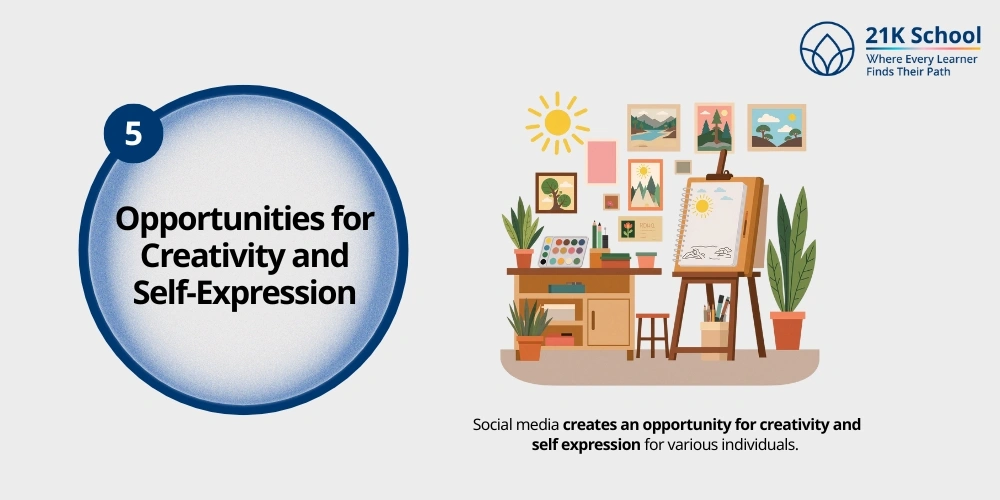
Social media creates an opportunity for creativity and self expression for various individuals.
It is a kind of stage where students can showcase their best skills to the digital community. Talent related to music, art, photography, writing etc.
Some popular virtual platforms such as Instagram, TikTok, and YouTube where students can start their own trend and creativity worldwide.
Negative Impact of Social Media on Students
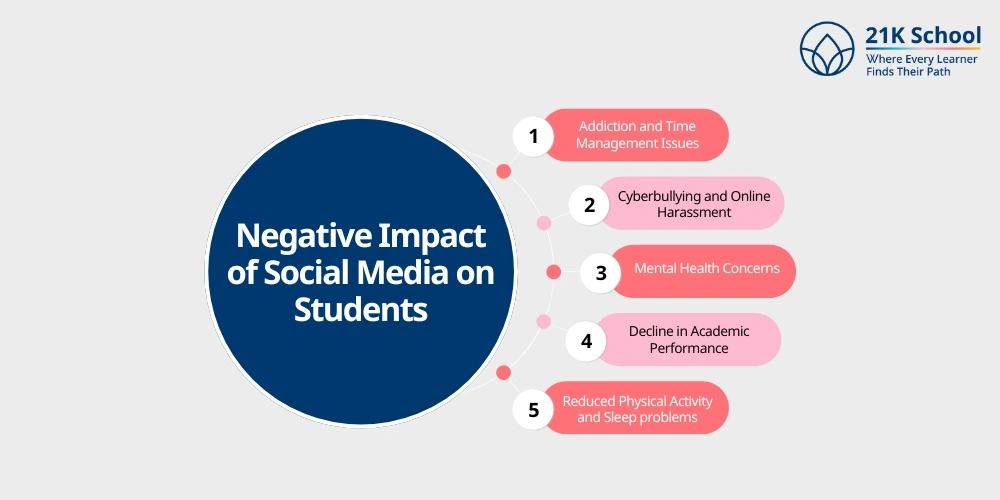
Social media has both advantages and disadvantages, understanding disadvantages or negative impact in detail can help in finding effective solutions.
Given below are some essential points highlighting the negative impact of social media in students:
1. Addiction and Time Management Issues
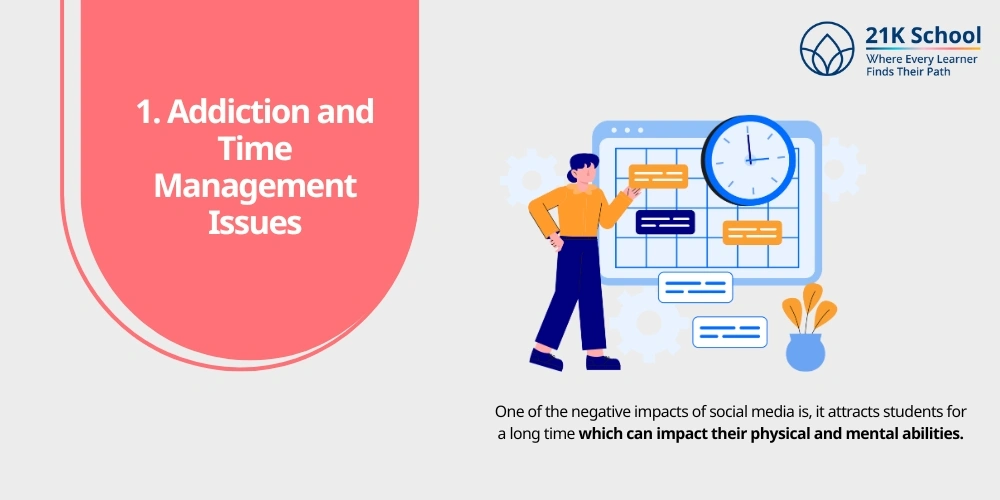
One of the negative impacts of social media is, it attracts students for a long time which can impact their physical and mental abilities.
Spending hours watching videos for entertainment and scrolling multiple times can create a loop or habit which becomes difficult to get rid of.
Addiction directly impacts time management of learners which can be used for building connection and collaboration, outdoor activities and homework.
2. Cyberbullying and Online Harassment
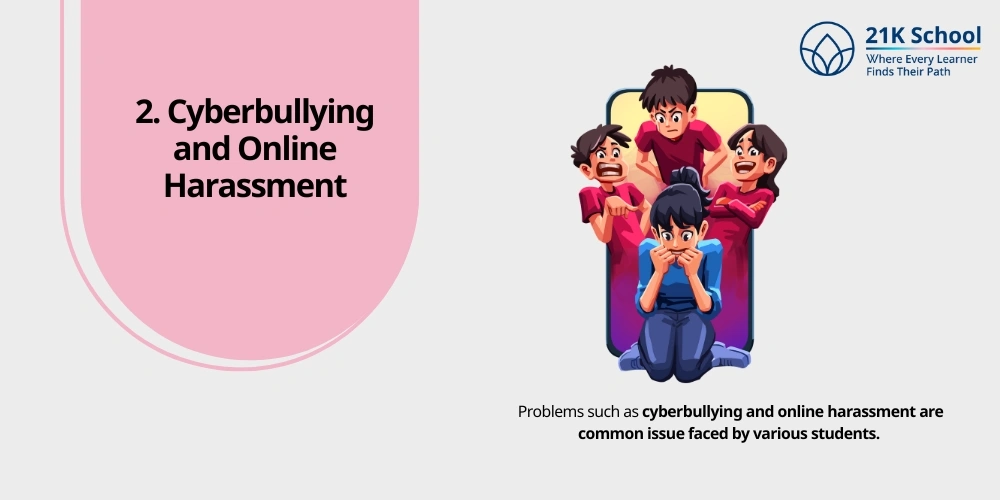
Problems such as cyberbullying and online harassment are common issue faced by various students.
Individuals deal with hurtful comments, wrong rumours and continuously poking for particular topics etc.
These kinds of practices reduce confidence and self-esteem of students which can impact negatively such as low academic personal growth.
3. Mental Health Concerns
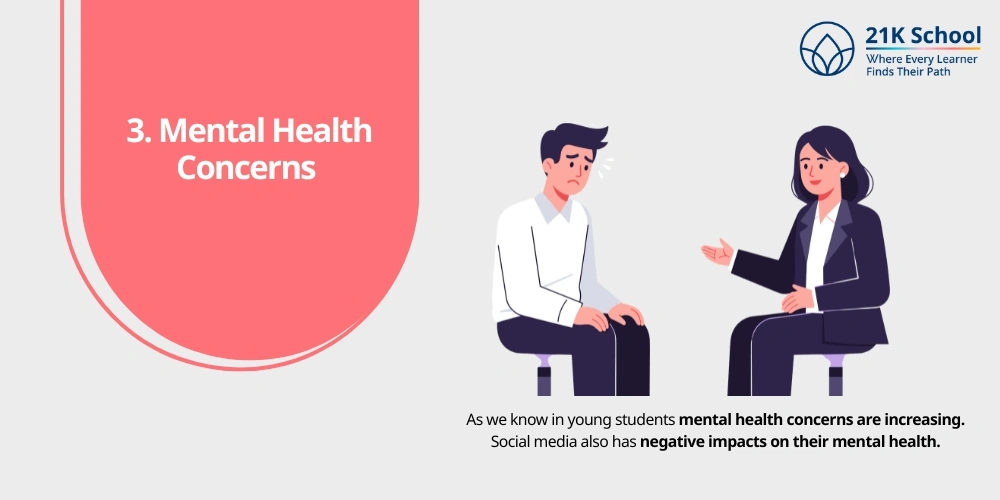
As we know in young students mental health concerns are increasing. Social media also has negative impacts on their mental health.
Constantly connecting with others’ life exposure and sharing every moment sometimes builds negative feelings. Pressure and unrealistic goals can make students stressed .
Also, sometimes the fear of missing out can result in stress and anxiety.
4. Decline in Academic Performance
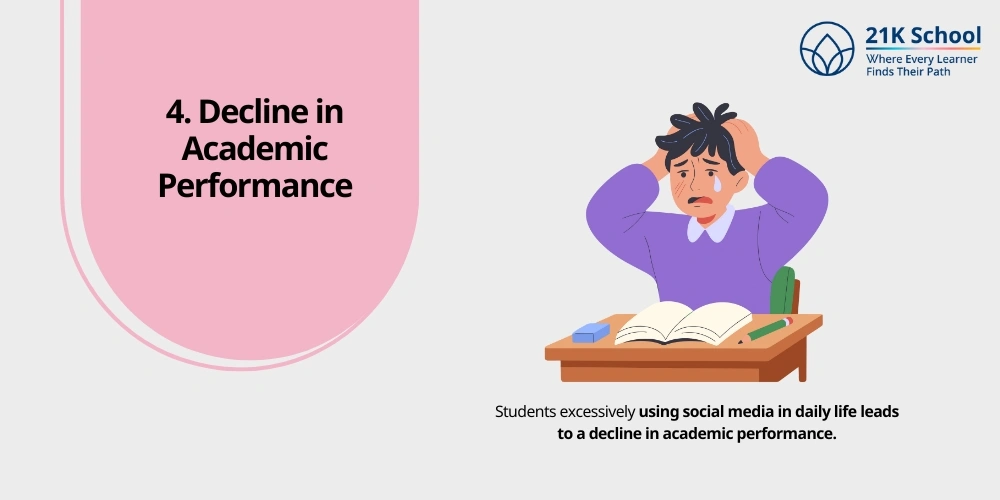
Students excessively using social media in daily life leads to a decline in academic performance. This leads to improper memory retention and low grades.
Too much time on social media can imbalance sleeping cycle meals and other daily activities which directly impact students academic performance.
Learn how to improve a childs academic performance .
5. Reduced Physical Activity and Sleep problems
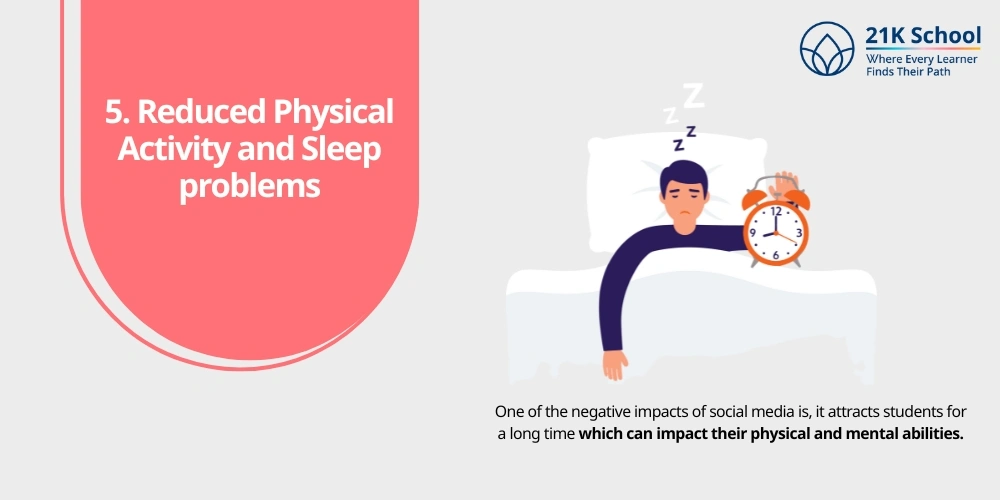
Continuously watching the screen and sitting on the couch for hours and scrolling can reduce physical activity and sleeping.
For a fresh mind and productive day ahead one needs to maintain a diet, sleep and be physically fit.
However, social media causes health issues like poor posture, and fatigue. Also, watching the blue light of the screen can impact the sleep cycle.
Explore why a bedtime routine is important for a child .
Role of Parents and Teachers in Managing Impact of Social Media on Students
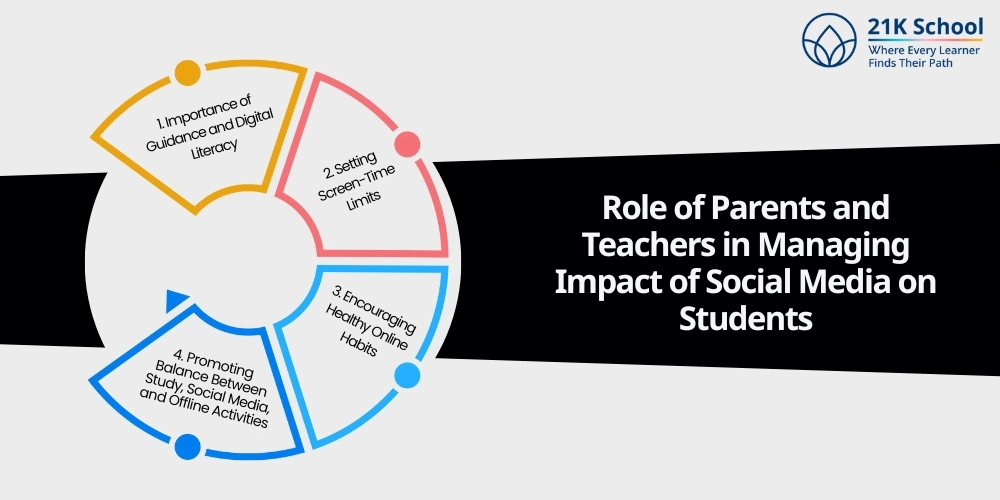
Parents and teachers both play a major role in students’ lives. To manage time on social media, parents and teachers can provide a good environment to balance everything.
Here’s how:
1. Importance of Guidance and Digital Literacy

Parents and teachers should guide students about the importance of implementing digital literacy and today’s world.
Proper guidance helps in understanding the effective use of social media and not overly or in a wrong direction.
2. Setting Screen-Time Limits

For young kids it’s important to set a time limit of daily watching video for both educational or entertainment.
This will help them to reduce the scope of addiction and nonstop watching which can affect their physical and mental health.
Understand the screen time for kids .
3. Encouraging Healthy Online Habits
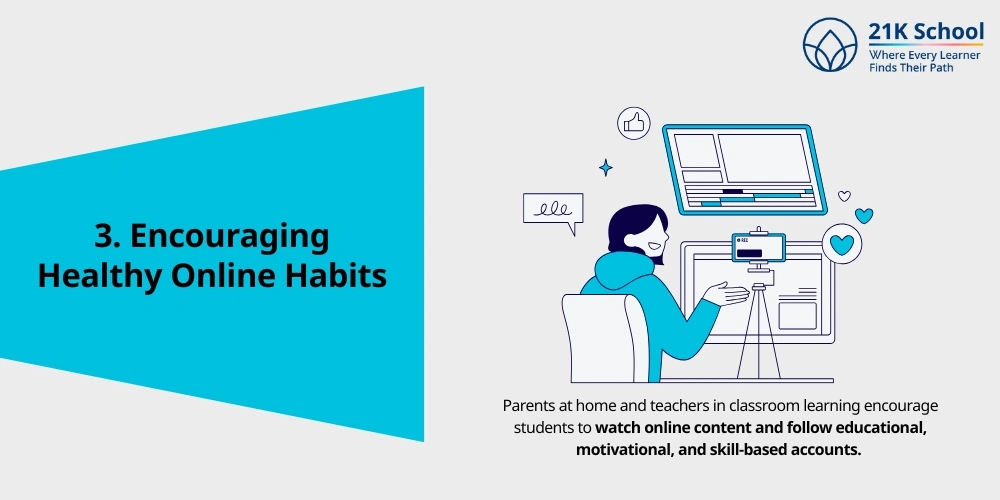
Parents at home and teachers in classroom learning encourage students to watch online content and follow educational, motivational, and skill-based accounts.
This will help in engaging healthy online habits up to a certain limit.
4. Promoting Balance Between Study, Social Media, and Offline Activities
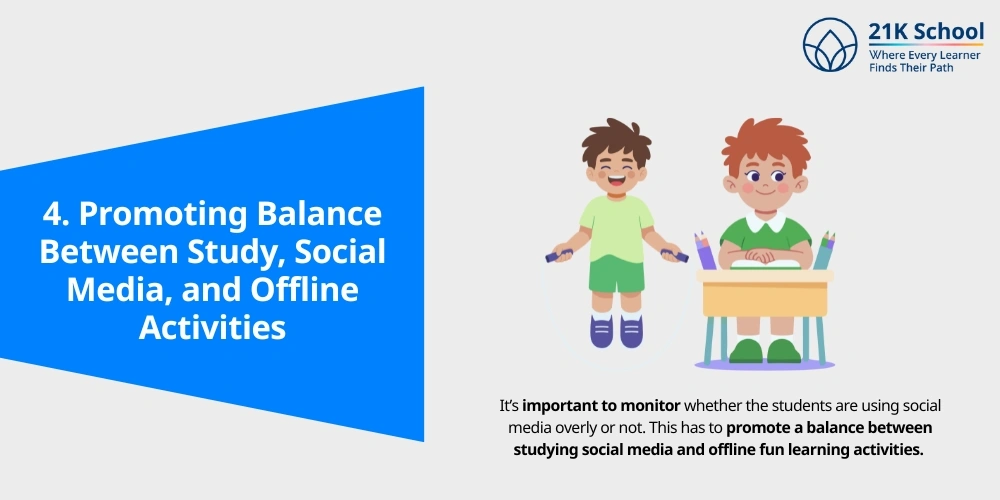
It’s important to monitor whether the students are using social media overly or not. This has to promote a balance between studying social media and offline fun learning activities .
One must encourage creative activities , work on hobbies, and face-to-face interactions with friends and family.
Practical Tips for Students to Use Social Media Wisely
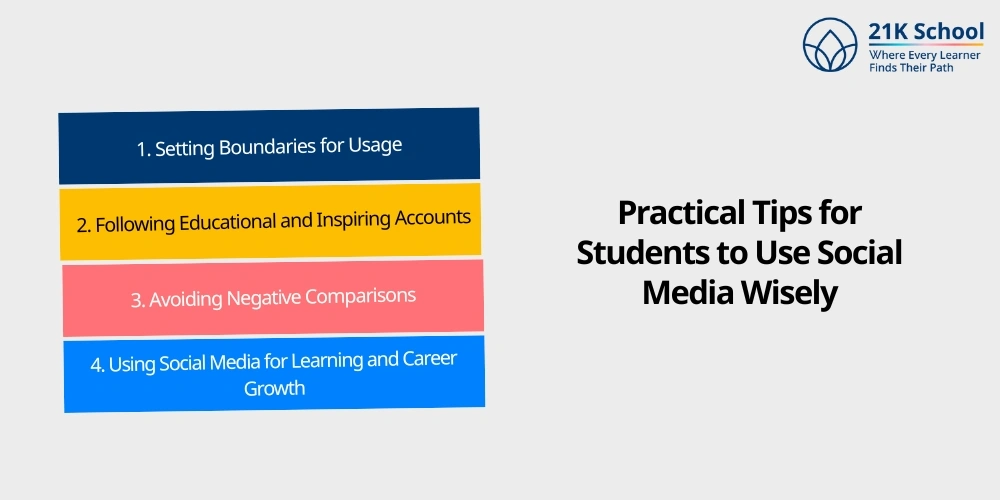
By exploring some practical tips, students can use social media for learning and entertainment while also managing their daily activities.
1. Setting Boundaries for Usage
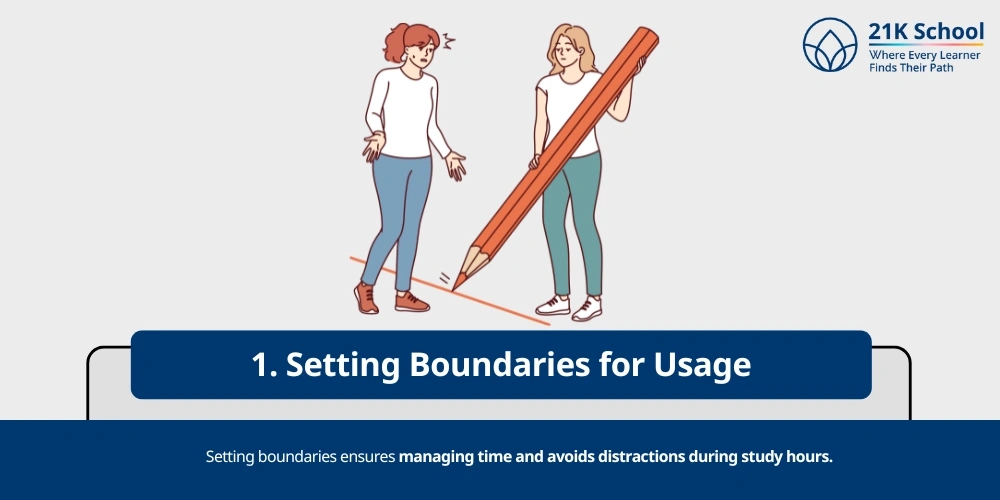
Setting boundaries ensures managing time and avoids distractions during study hours .
Parents and teachers can also help to maintain social media addiction.
2. Following Educational and Inspiring Accounts
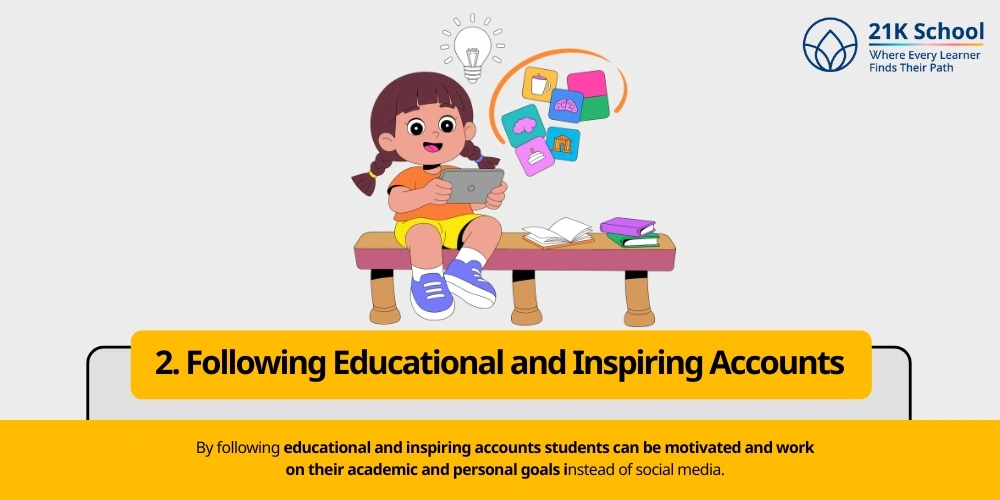
By following educational and inspiring accounts students can be motivated and work on their academic and personal goals instead of social media.
3. Avoiding Negative Comparisons

Students often compare themselves with other students and their content which sometimes can be fake. This will increase stress and anxiety to compete.
Instead of competing or comparison one must focus on self growth and academic achievements.
4. Using Social Media for Learning and Career Growth
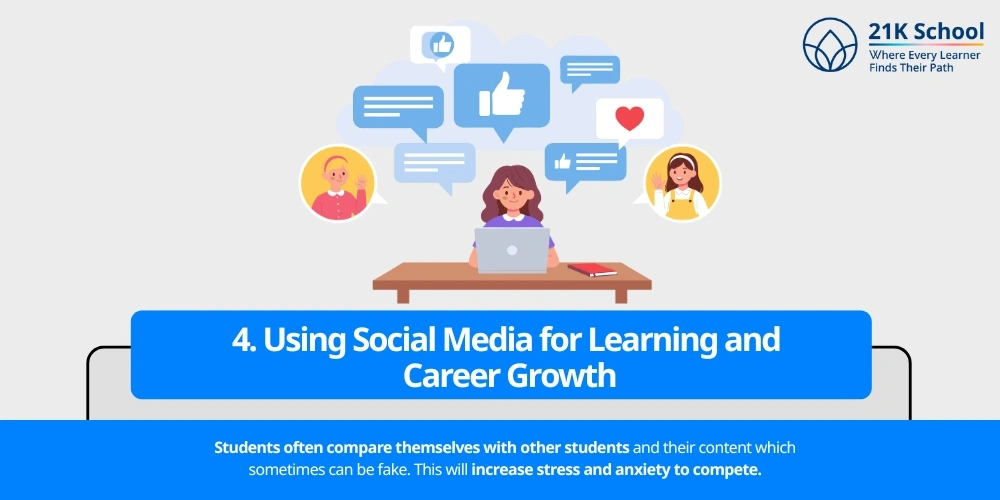
Students can also use social media effectively by joining groups, communities, or pages. This will guide them to the path of learning and career growth.
Conclusion
Social media plays an important role in everyone’s life. Its both negative and positive impact affects students’ development.
Positive impact such as opportunities for learning, communication, and creativity ensure a positive learning environment .
While negative impacts like cyberbullying, poor mental health, addiction and reduction in academic growth can have negative effects.
One must balance using social media by setting limits, watching learning videos and informative content. To do so, parents and teachers can monitor and guide students.
Remember, connecting to the digital world is good but to a limited extent


